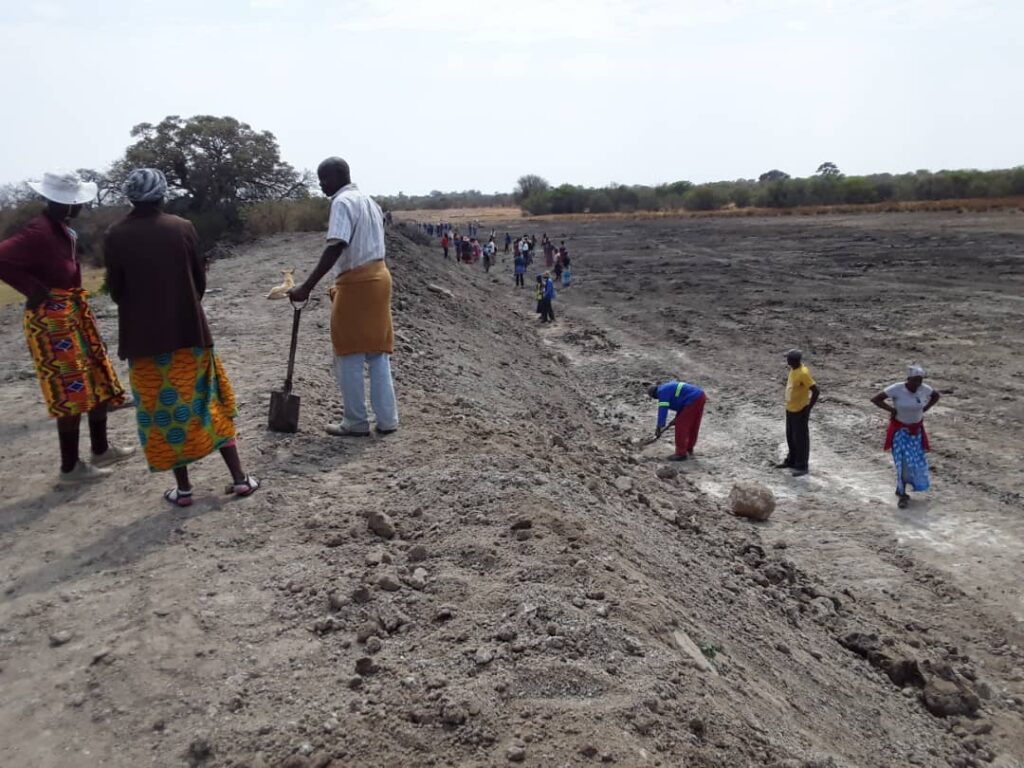In a massive show of unity of purpose including an effort to solve perennial water woes for livestock and humans, villagers from Tjehanga area in Bulilima, Plumtree District, successfully teamed up to construct a dam without donor funding or government assistance.
The community has been contributing R100 per homestead for almost a year since 2020, targeting to raise about R150 000 needed to hire an earth moving truck.
The earth moving truck company had charged a dry rate of close to R1 000 per hour to reconstruct Mpangana Dam.

Villagers said last constructed by the colonial government about 60 years ago, Mpangana Dam accumulated silt and debris over time and eventually filled up with mud in 1990 due to lack of de-silting measures.
The mud-filled dam also become a death trap for cattle and donkeys that would be stuck in the mud whilst seeking water.
An estimated 20 to 30 cattle in the area would also die annually from getting stuck in the mud, depriving families who mostly thrive on subsistence farming, of draught-power and wealth.
“The community that surrounds and uses Mpangana Dam had a meeting in August 2019 to discuss shortages of water in our community. The previous dam constructed 60 years ago by the colonial government became shallow as it was never maintained,” said Shepered Ngwenya, one of the community members who spearheaded the dam construction.
“Every rainy year, Tjontala river flowed into the dam bringing with it a layer of rubbish, soil, and mud that was filling up the dam. We ended up having a depleted dam in 1990, which would run dry by mid-June or early July and was unable to last villagers from the rainy season to the next.”
Ngwenya says the process of securing water for their livestock had become time consuming and difficult such that they could not manage to fulfill daily obligations, leading to stock loss and death to thirst.
“It is tough because you cannot do this every day. Some of us are a bit far from the boreholes and one can’t use wheelbarrows to ferry water, our soils are sandy and paths have gullies. Most boreholes in the area are very heavy for one person to pump alone and fill up a 20 litre bucket,” he said.”
“As villagers we discussed our plight and decided that we need to construct a dam. It was agreed that everyone in the diaspora had to work on contributing R1 200 per individual for a year, from September 2020 to September 2021, which was R100 per month. All homesteads from Tjehanga especially Tjontala and Tjaheta villages that benefit from Mpangana dam for water purposes were to contribute a compulsory R250 once off payment.
“Our target was to raise not less than R150 000 for us to have a better dam that can last another 50 years and by September 2021 about 60 percent payments due had been made but that could not deter us from constructing the dam,” Ngwenya noted.
Before the dam construction, life had not been easy for the villagers, who had to drive their cattle and donkeys for a tiring 30 kilometre to and from trip daily to seek drinking water at the neighboring Ngwana and Nyele dams.
The distance factor also negatively affected livestock growth, which would ‘obviously’ be thirsty again by the time they arrive back at Tjehanga at sunset only to be shut in kraals for the night.
That is if the cattle made it back without being lost along the way.
Movement of livestock from one village to another in search of water also created tensions among villagers, as there were complaints of overgrazing in areas along the paths to the neighbouring dams.
Villagers also faced a daunting task of hand pumping water into dishes and troughs for smaller livestock, goats, sheep, calves and sick or pregnant cows that would not be let to travel the long distance for the obvious reason of fatigue and scorching hot weather in summer.
With most boreholes in the area not functioning or with low water yields per minute, long queues for the precious liquid for portable use and livestock were prevalent at these community shared boreholes.
The construction of the dam, estimated to benefit about 500 homesteads and about 40 000 livestock from Tjehanga, Tjaheta, Tjonkala, Nyele and Ngwana, was completed after a week’s work, without government or donor funding but sacrifice by community members.
The community now awaits for the rains to fill-up the dam this season.

